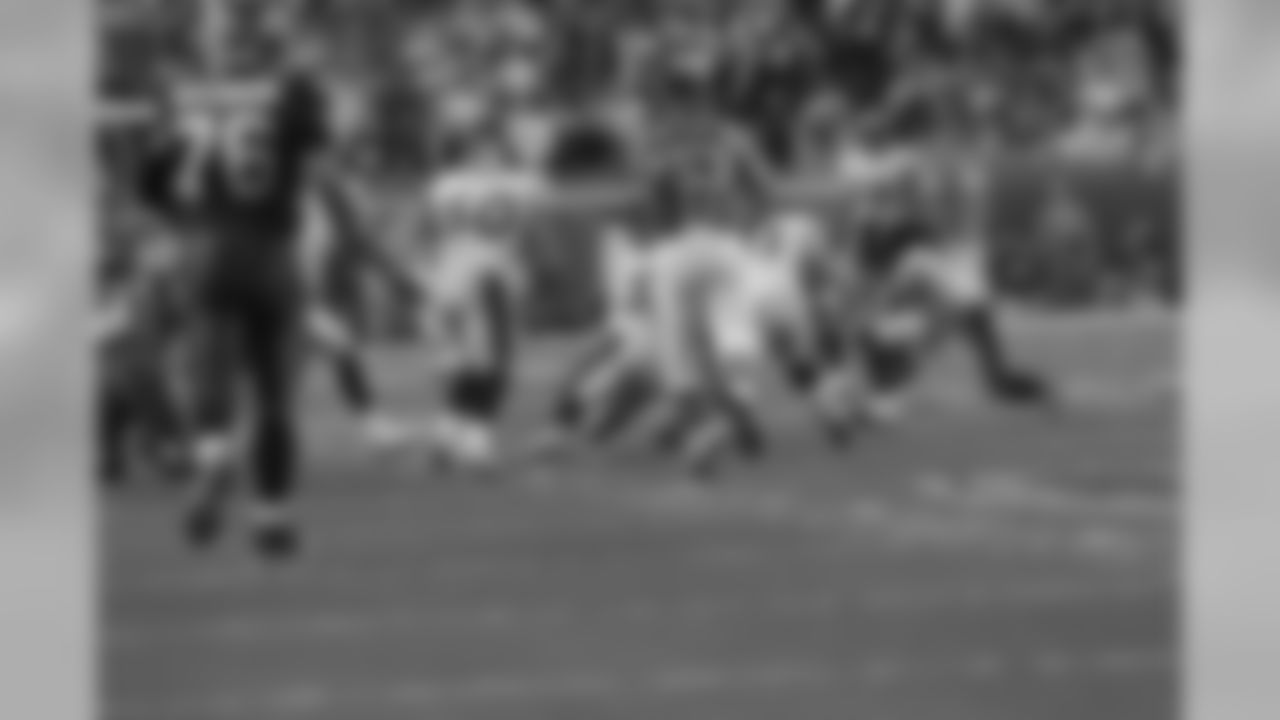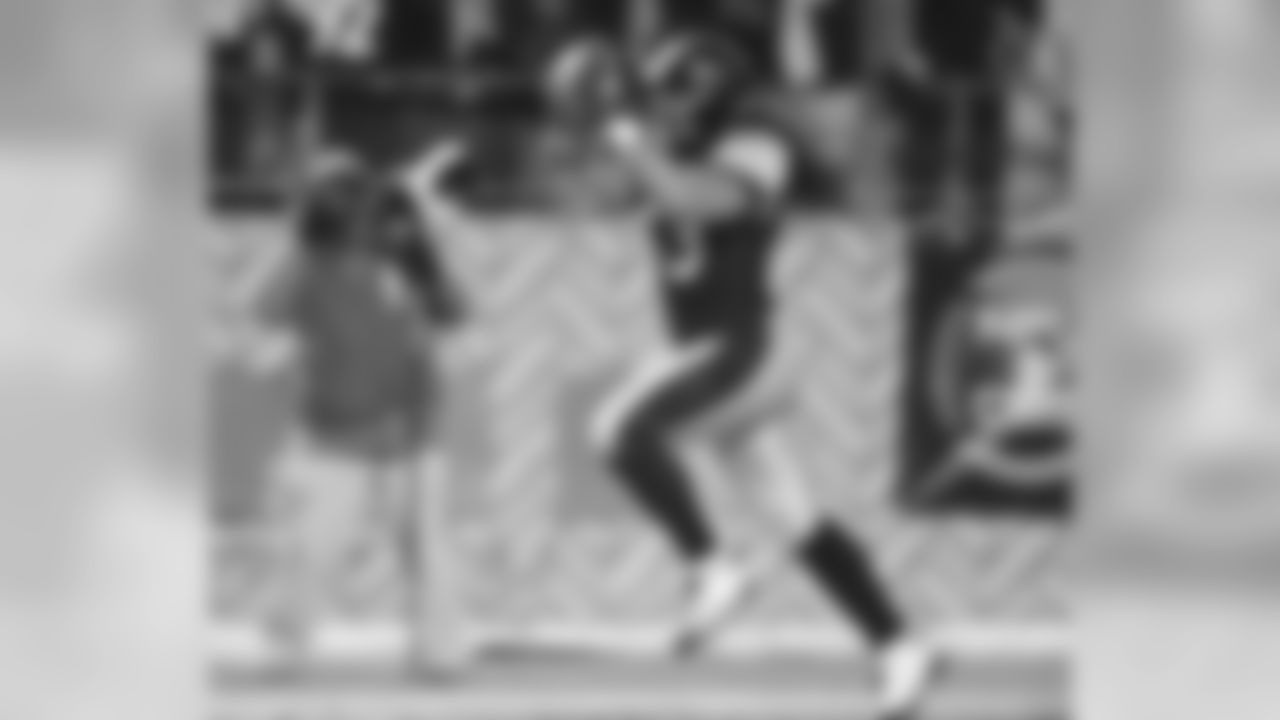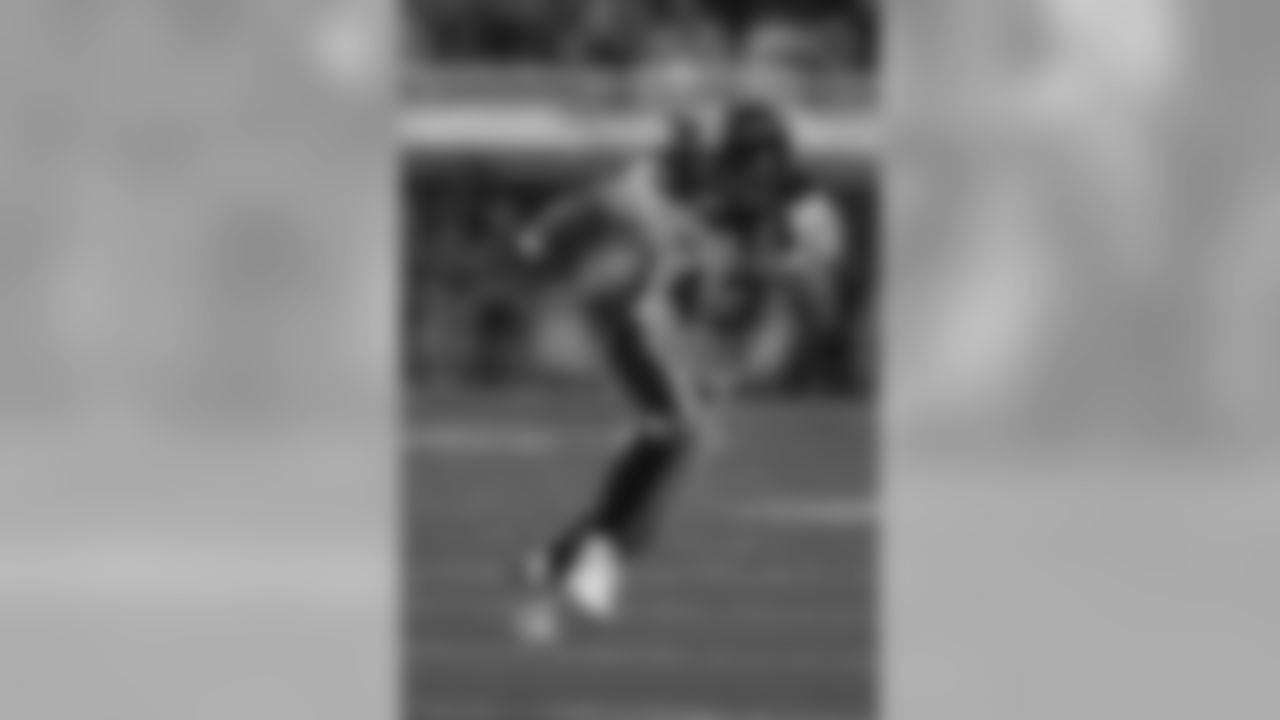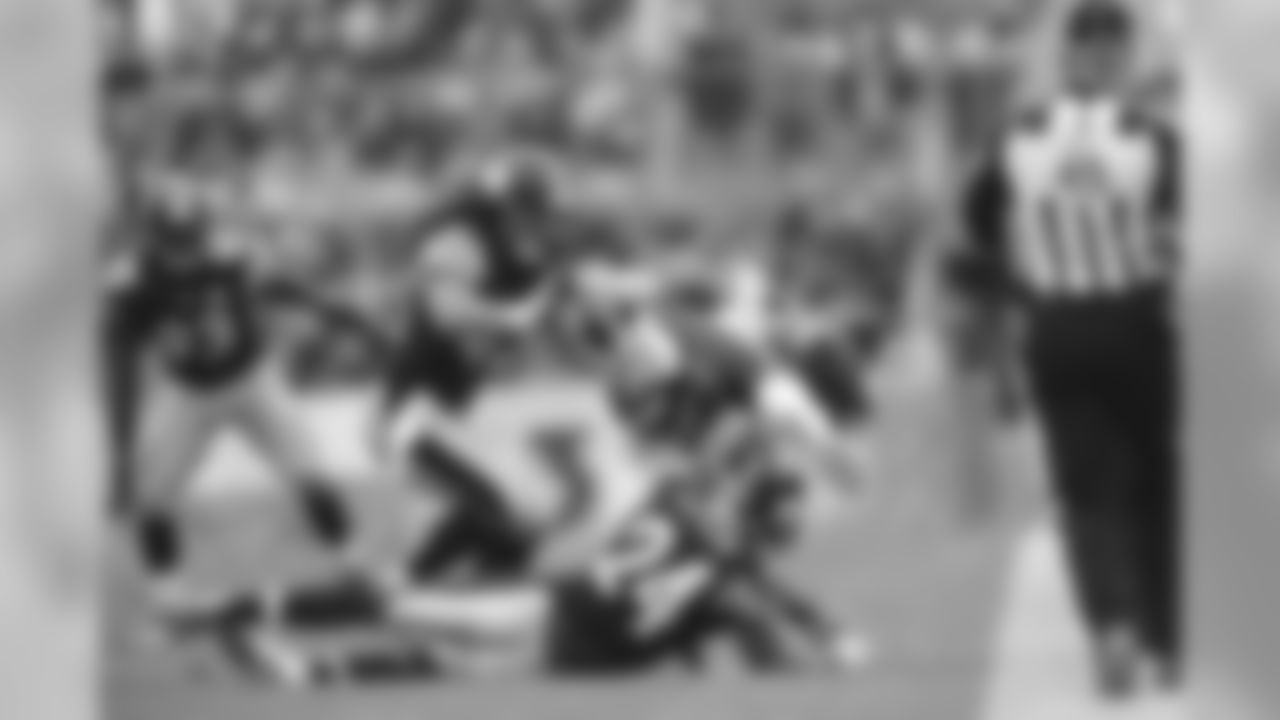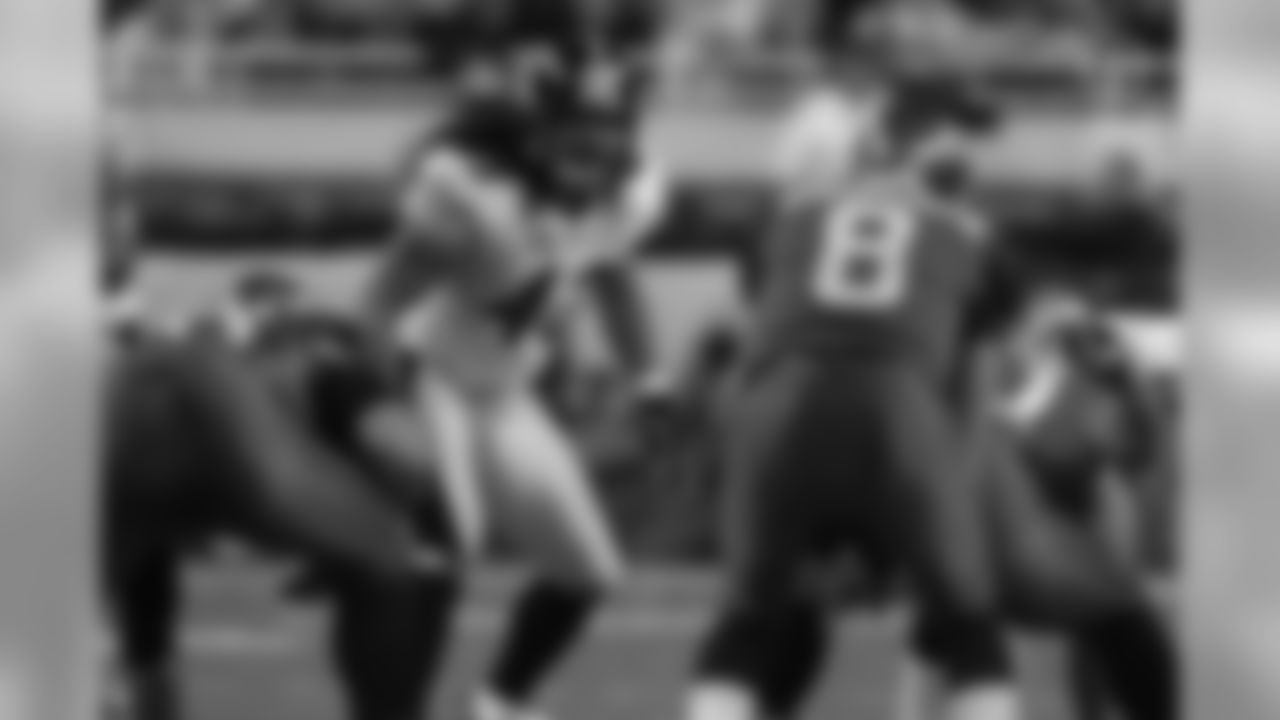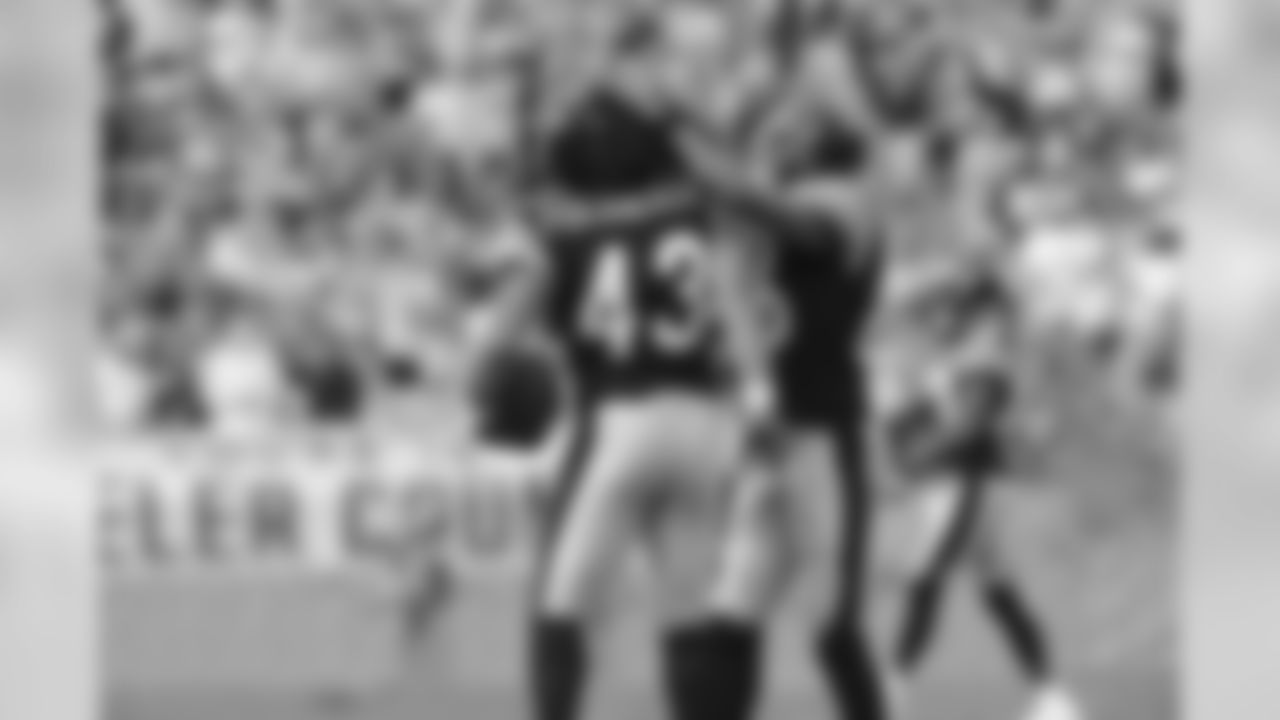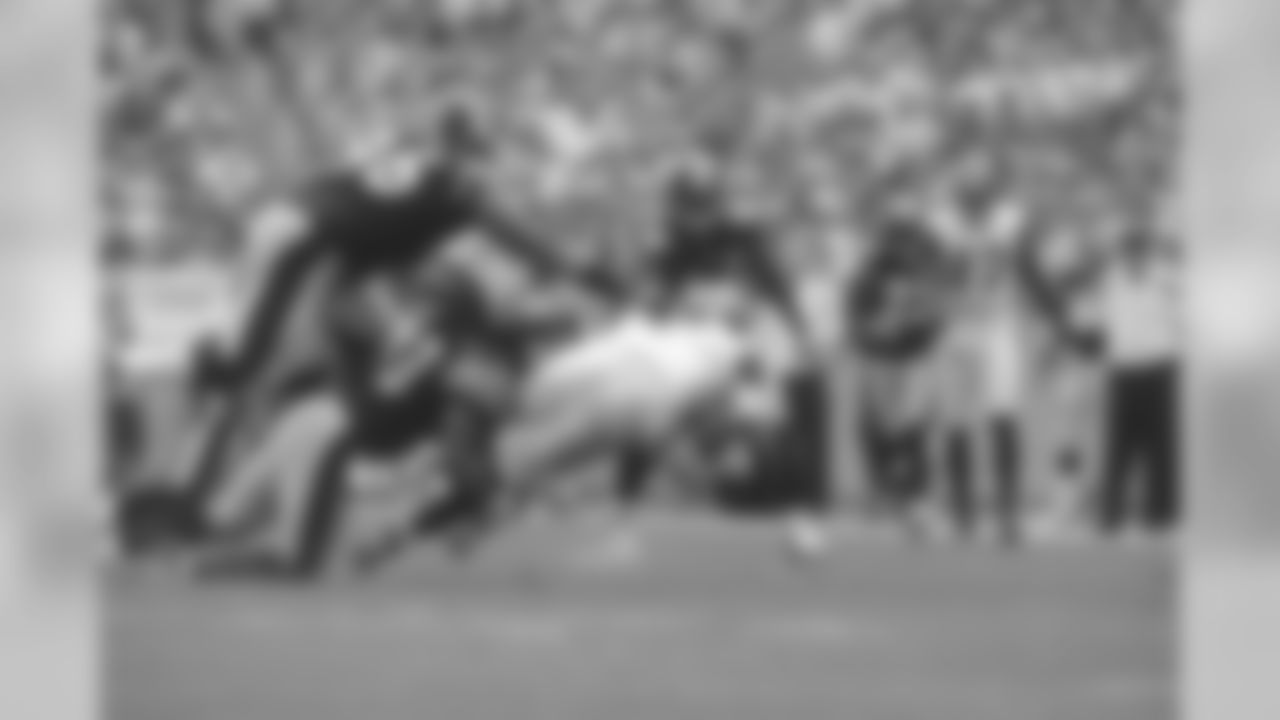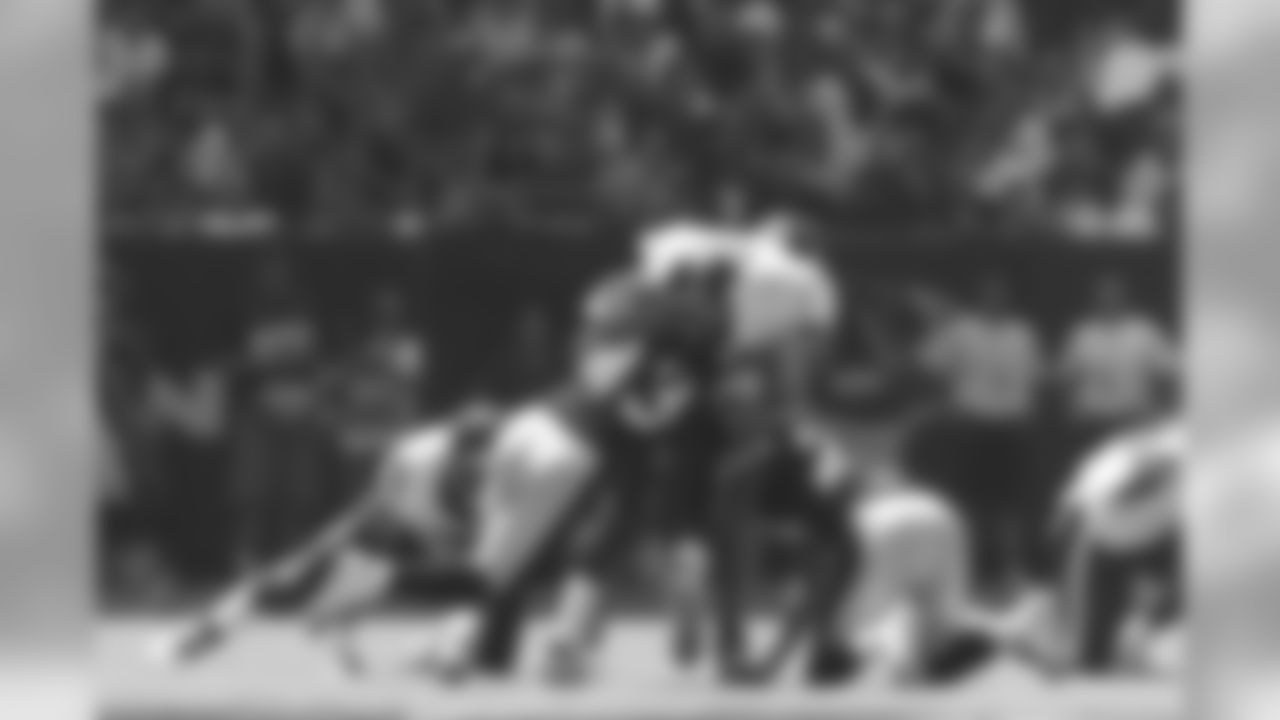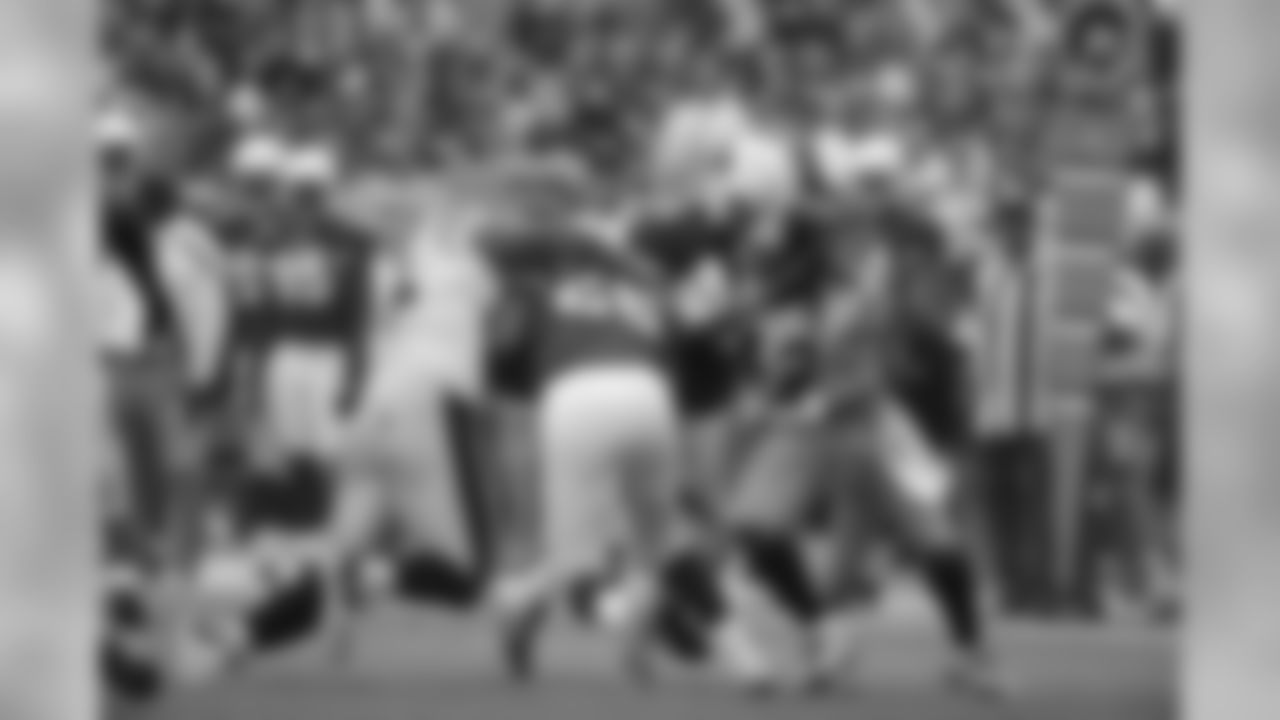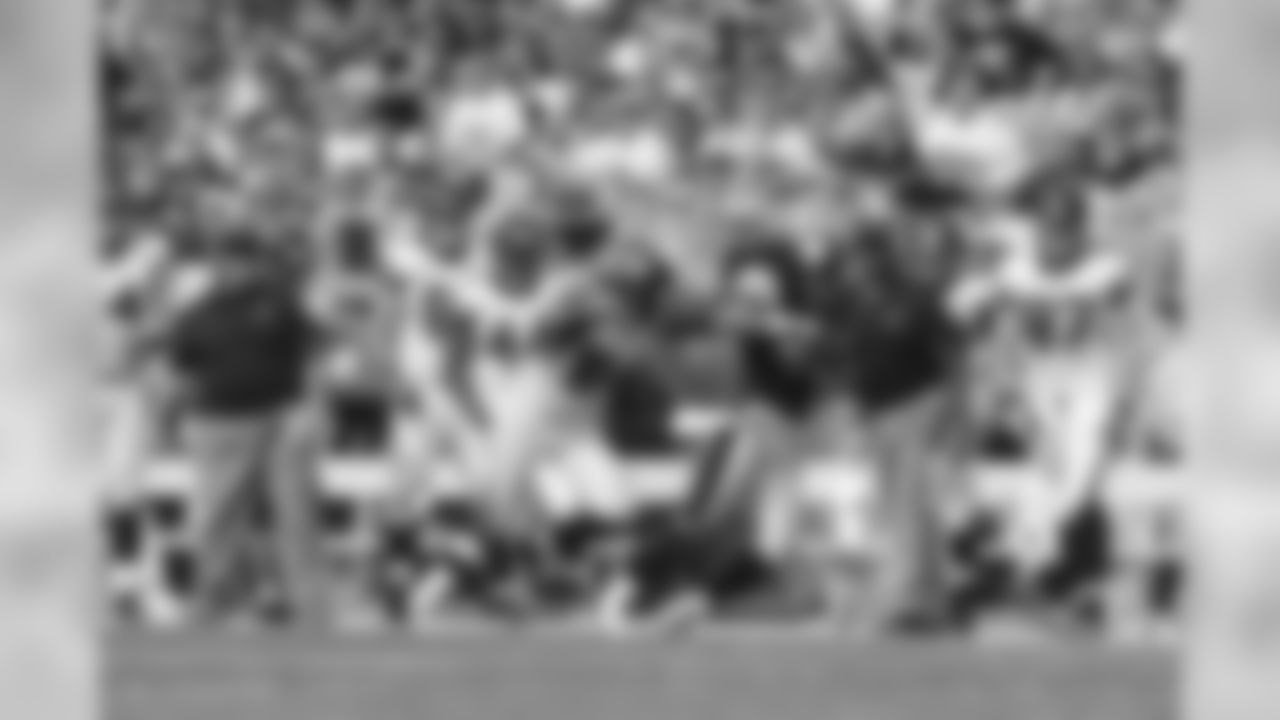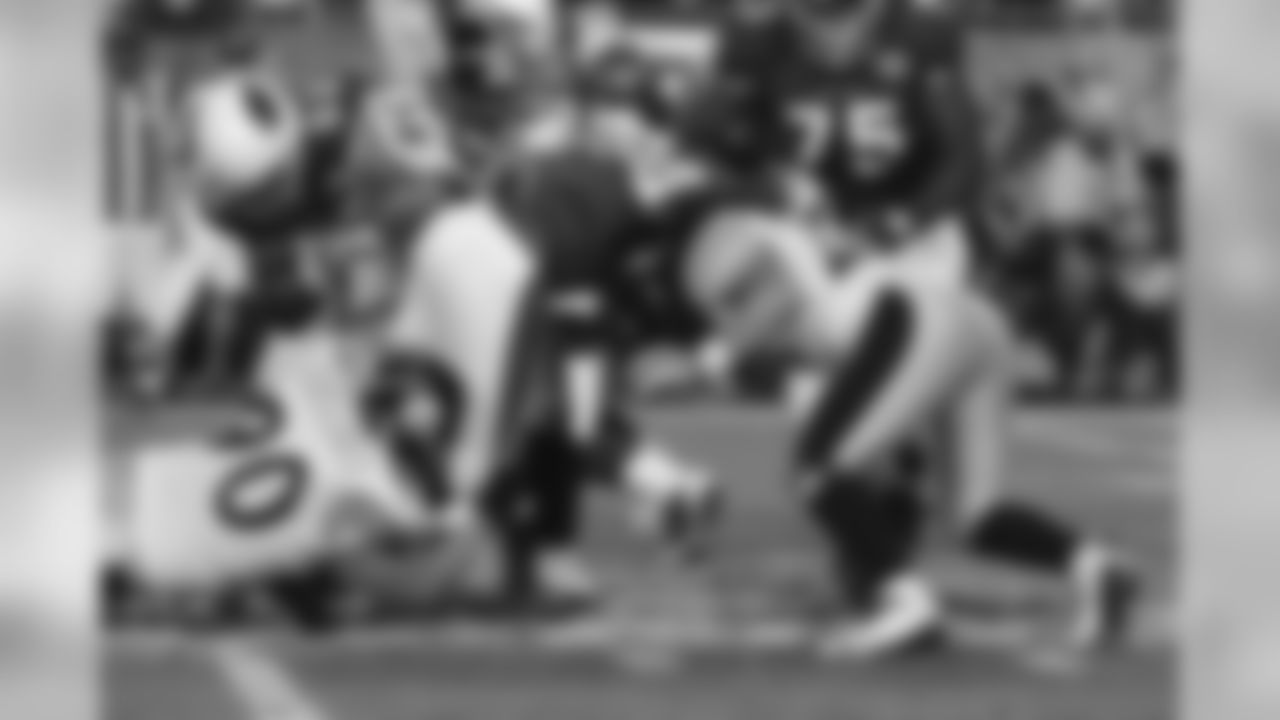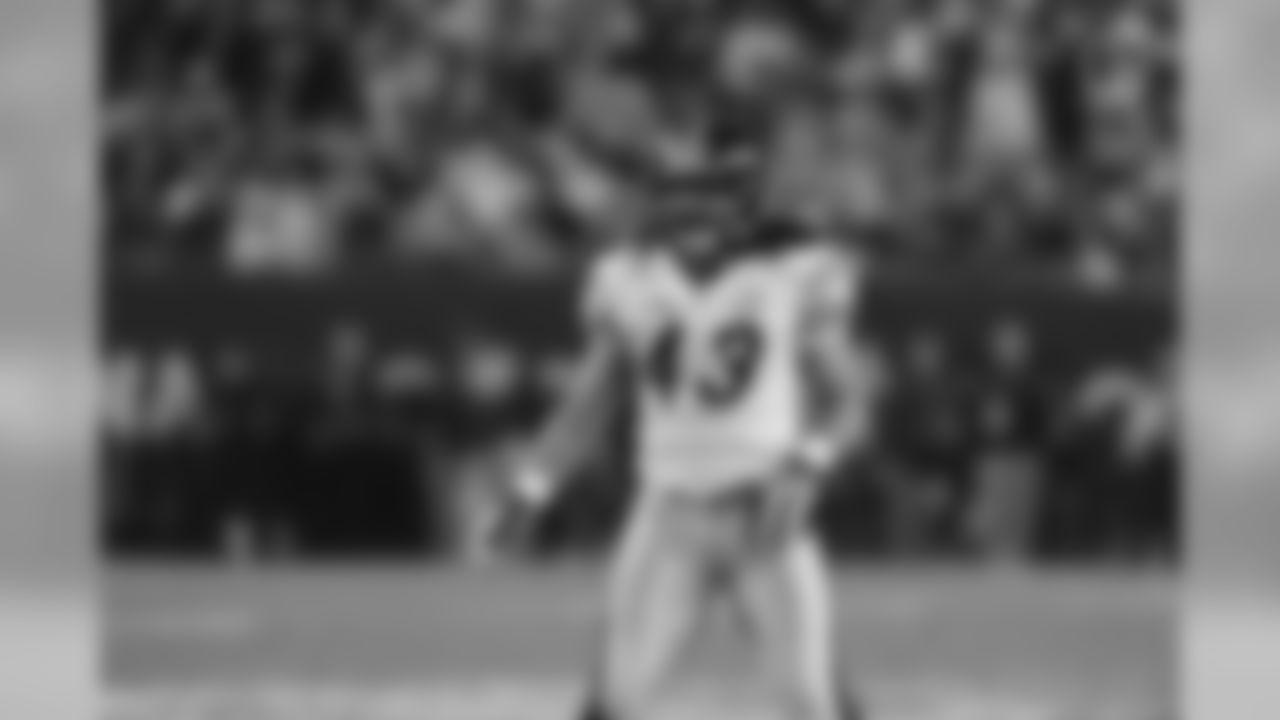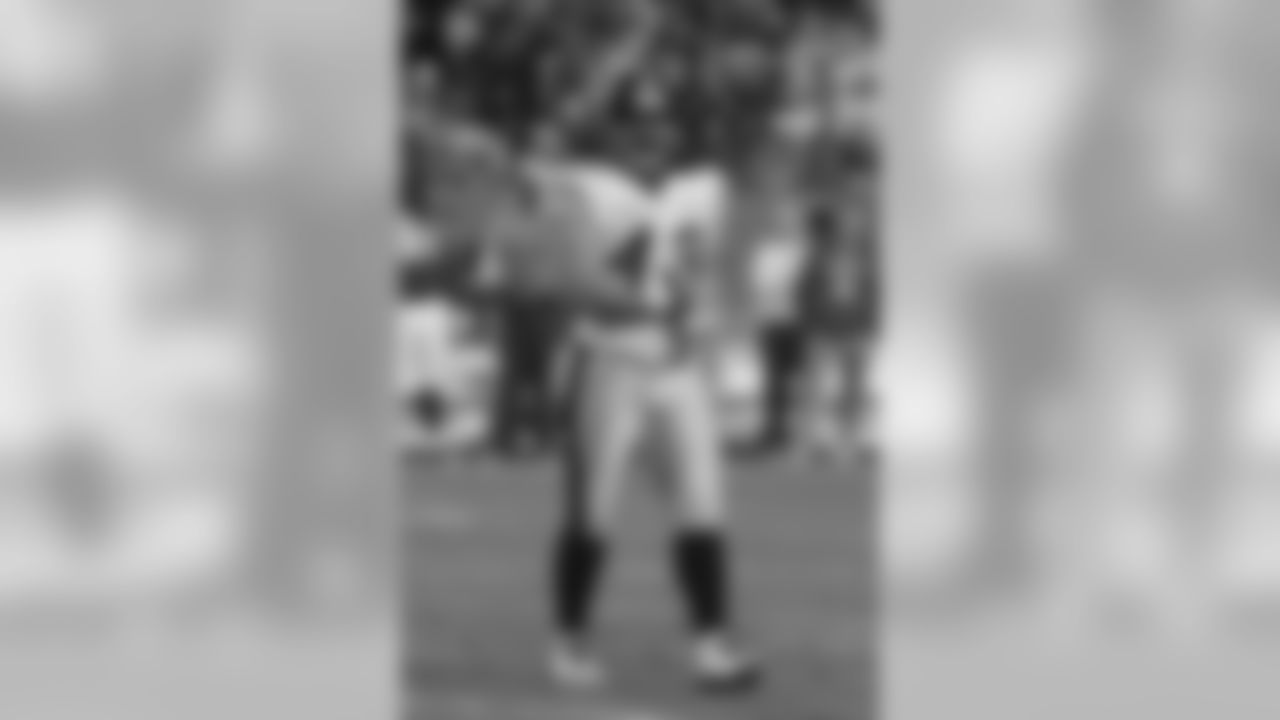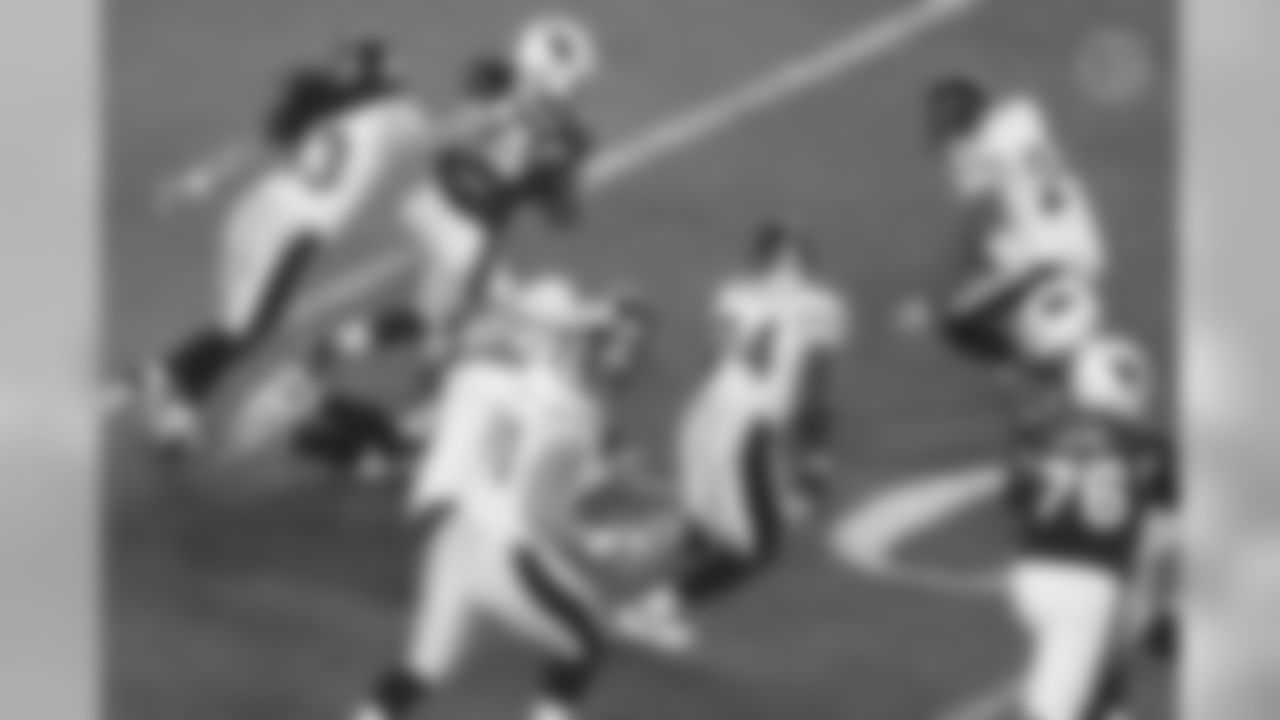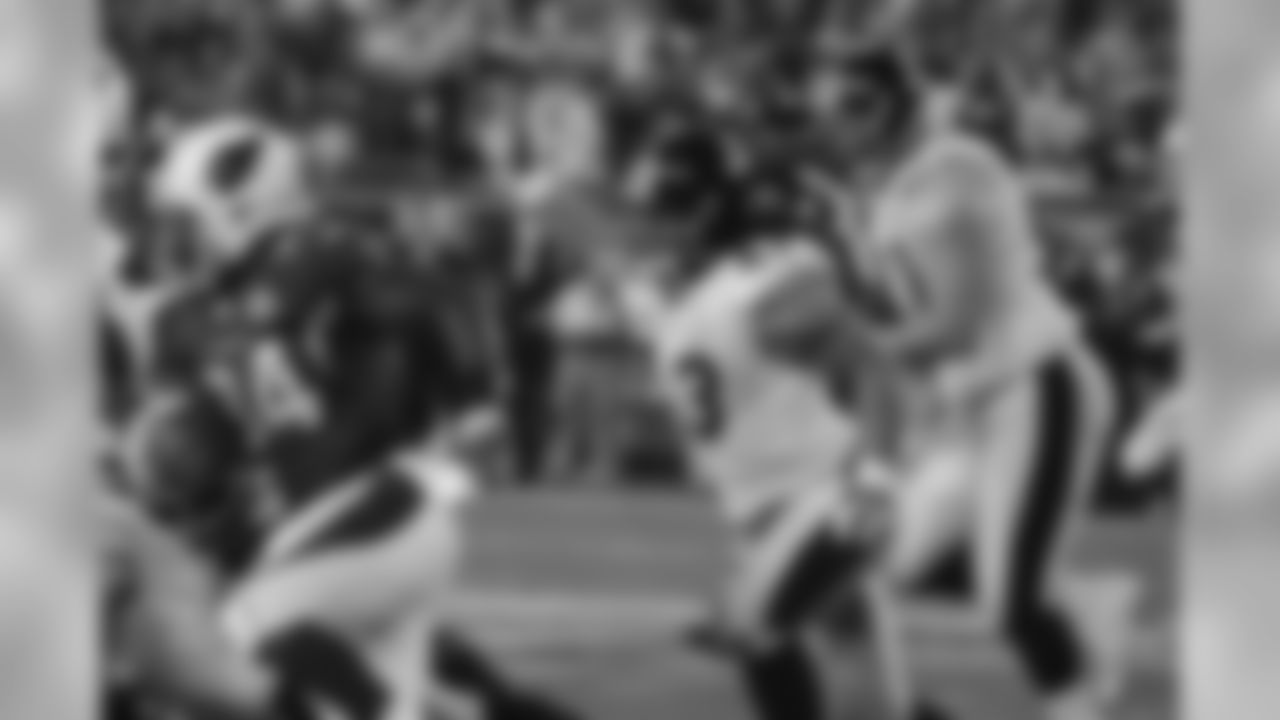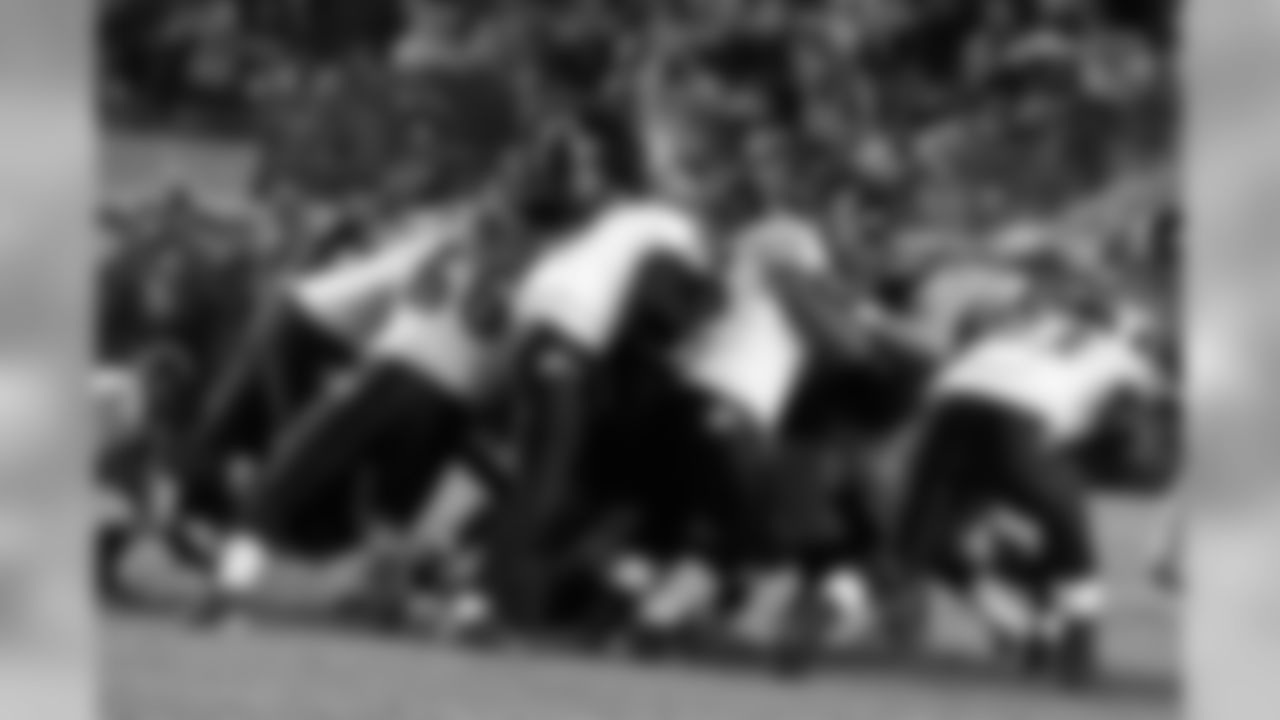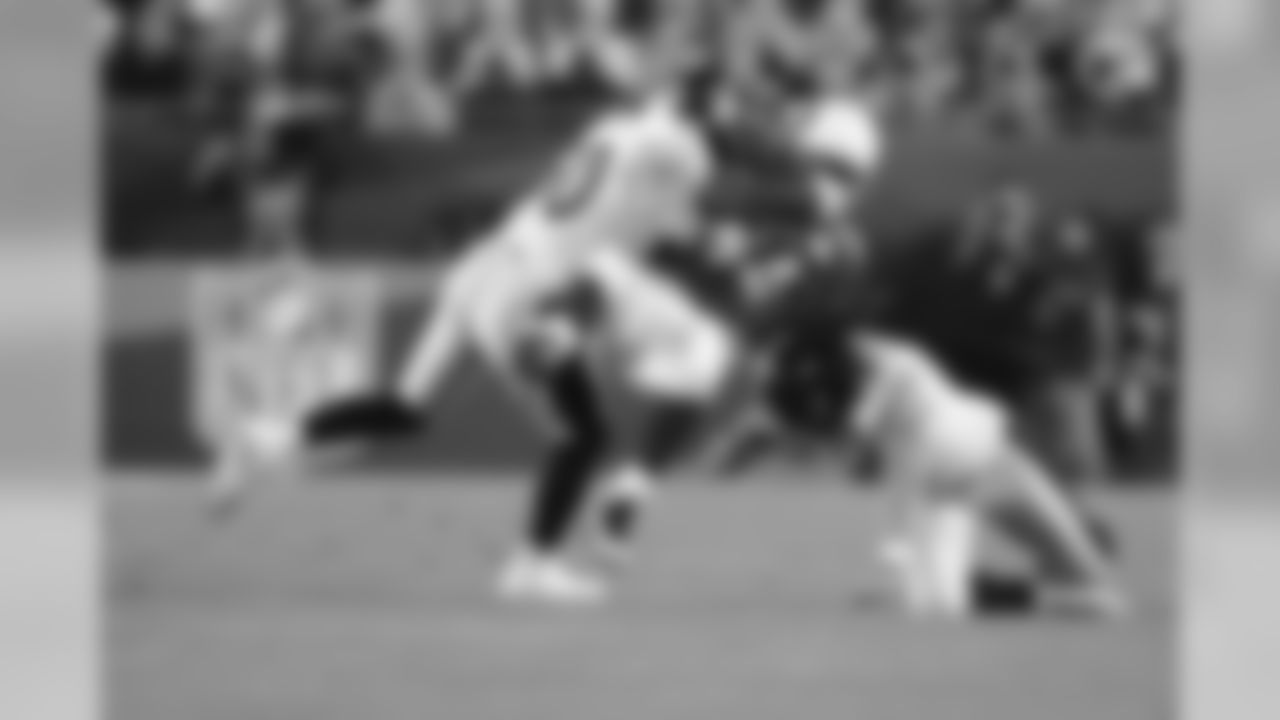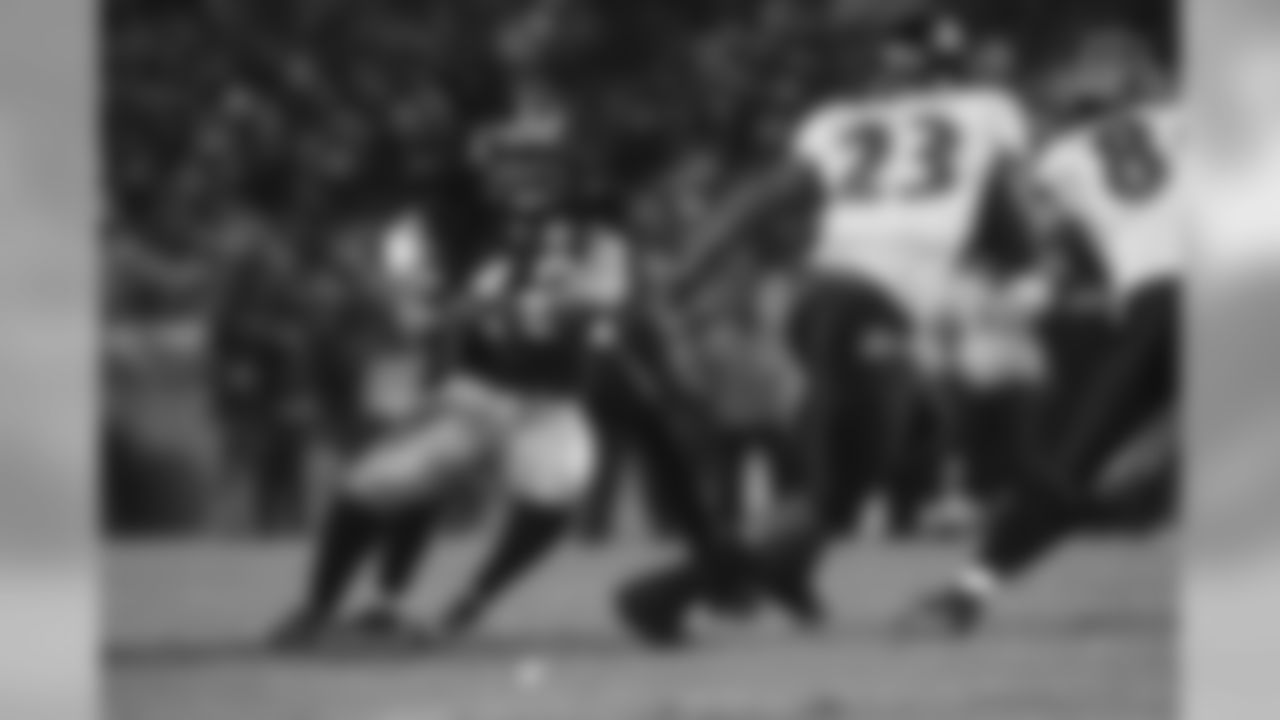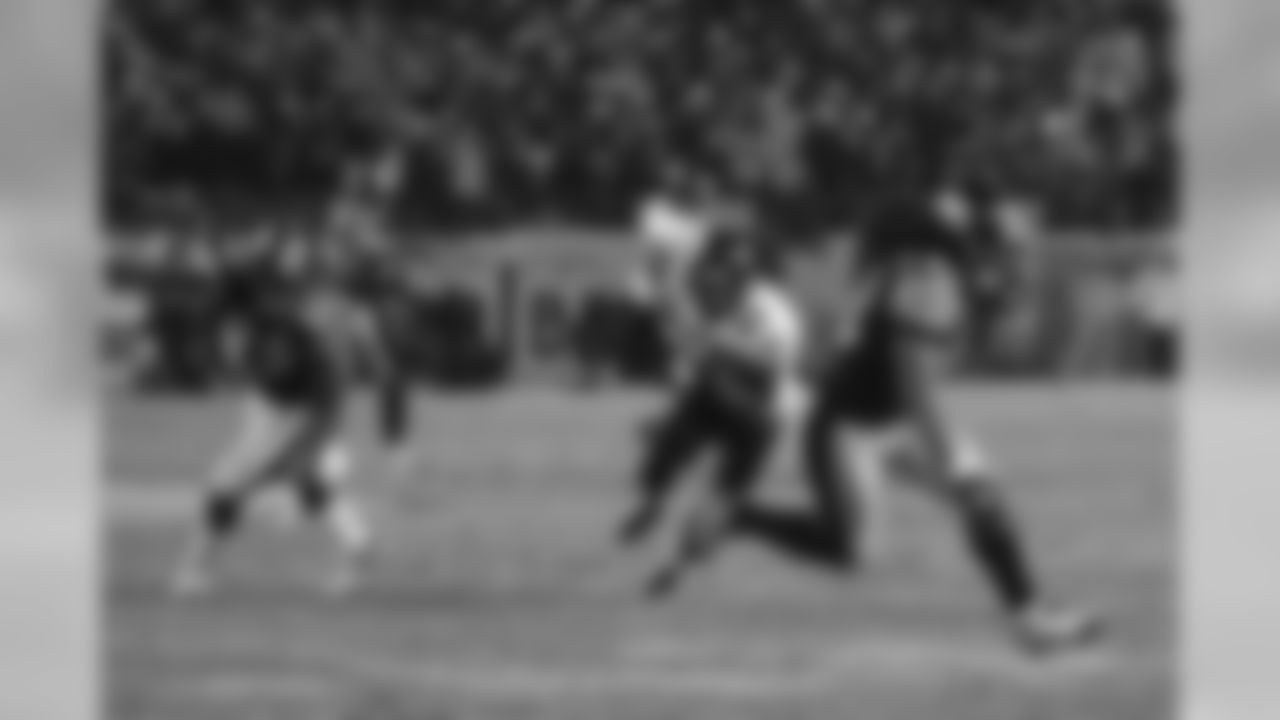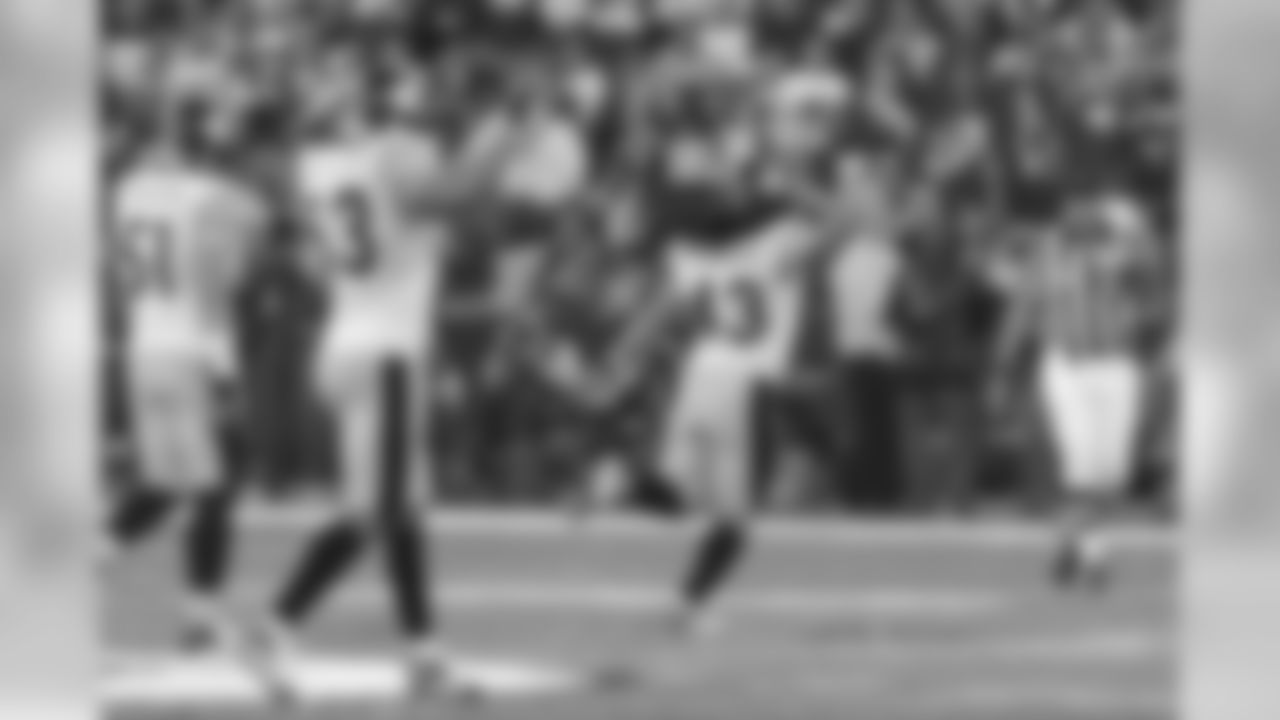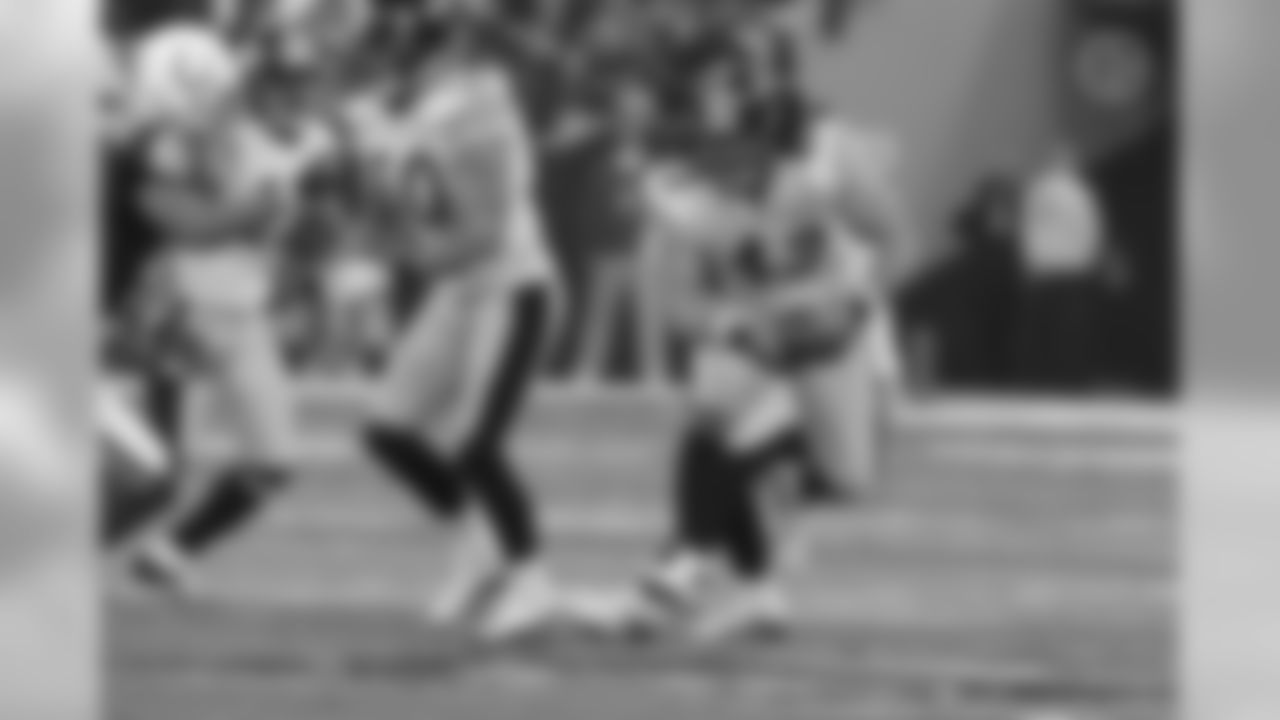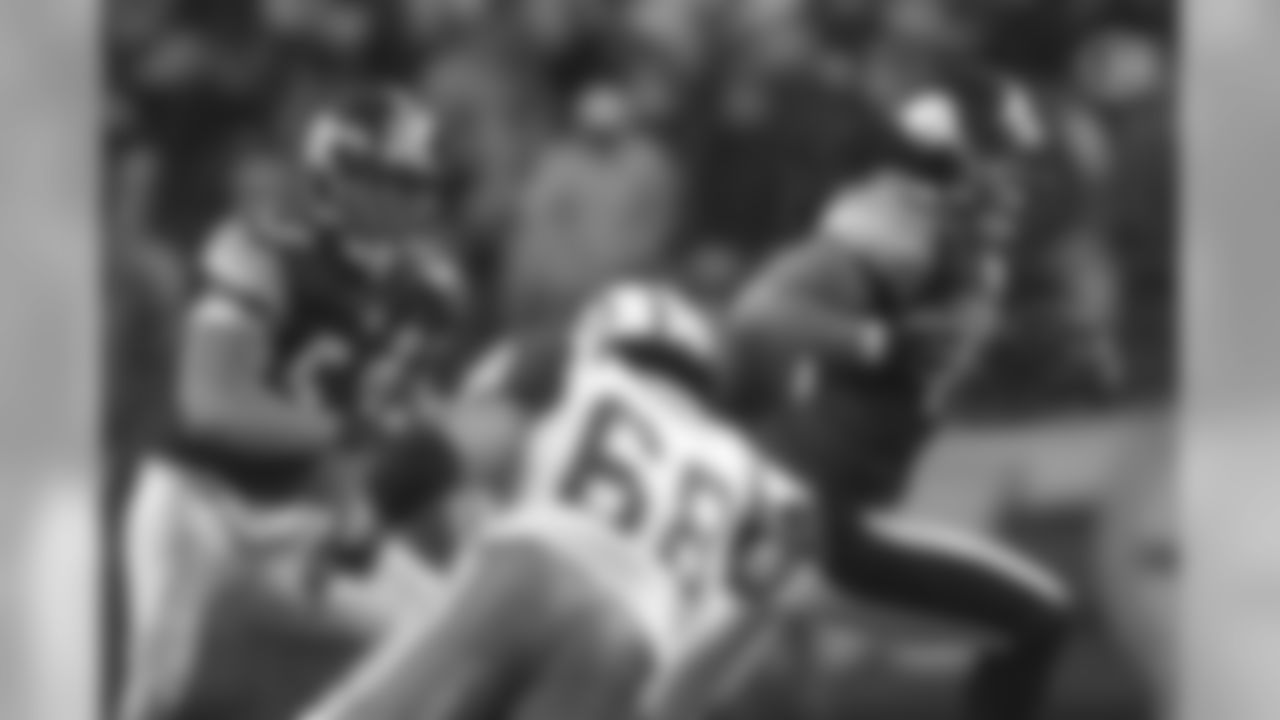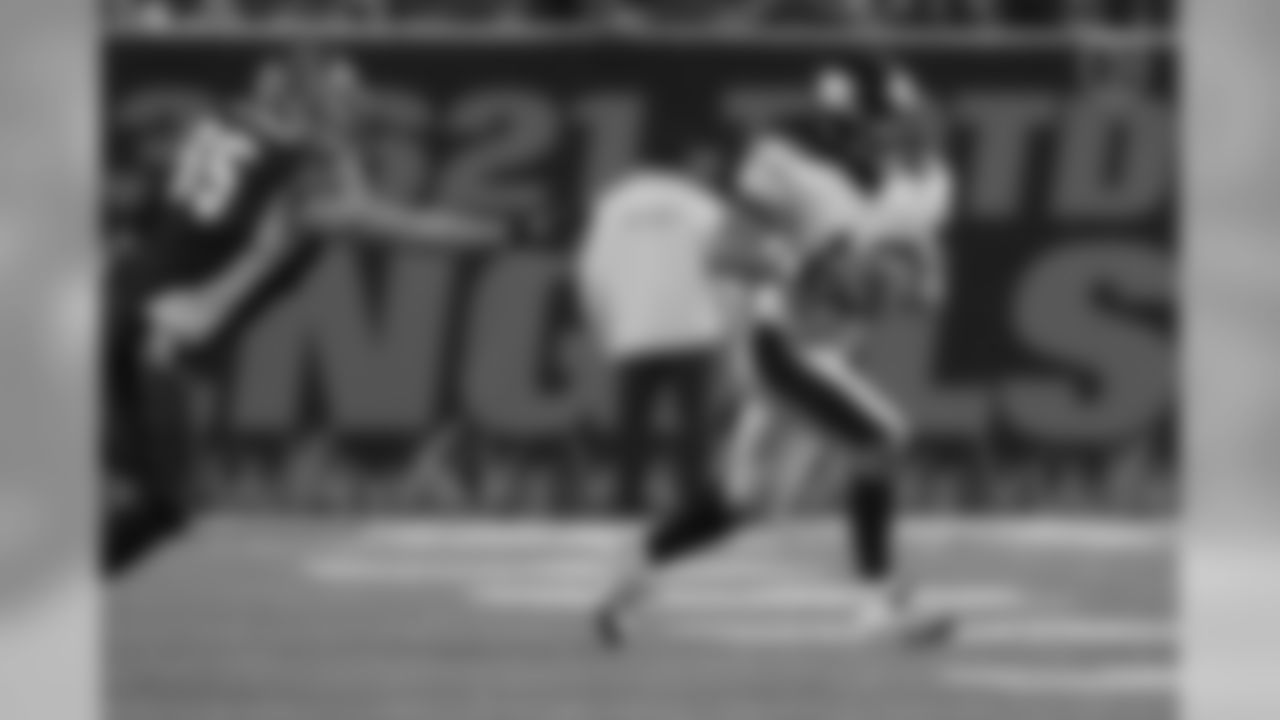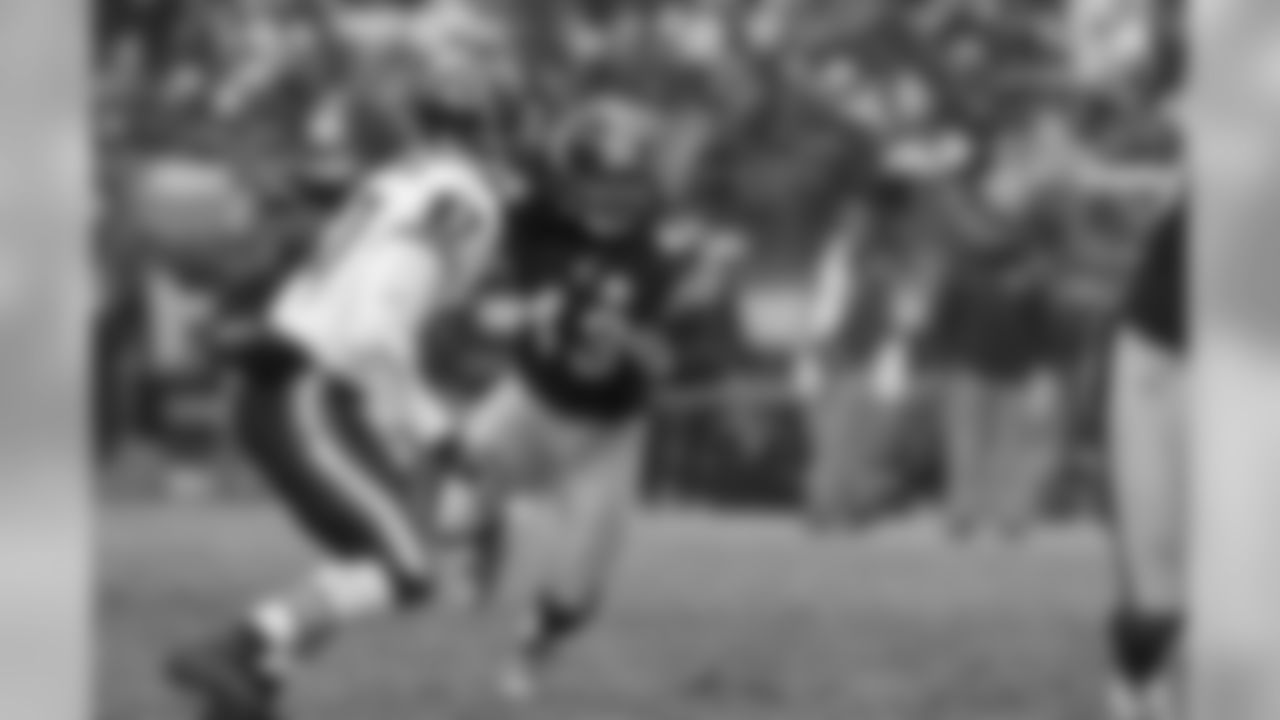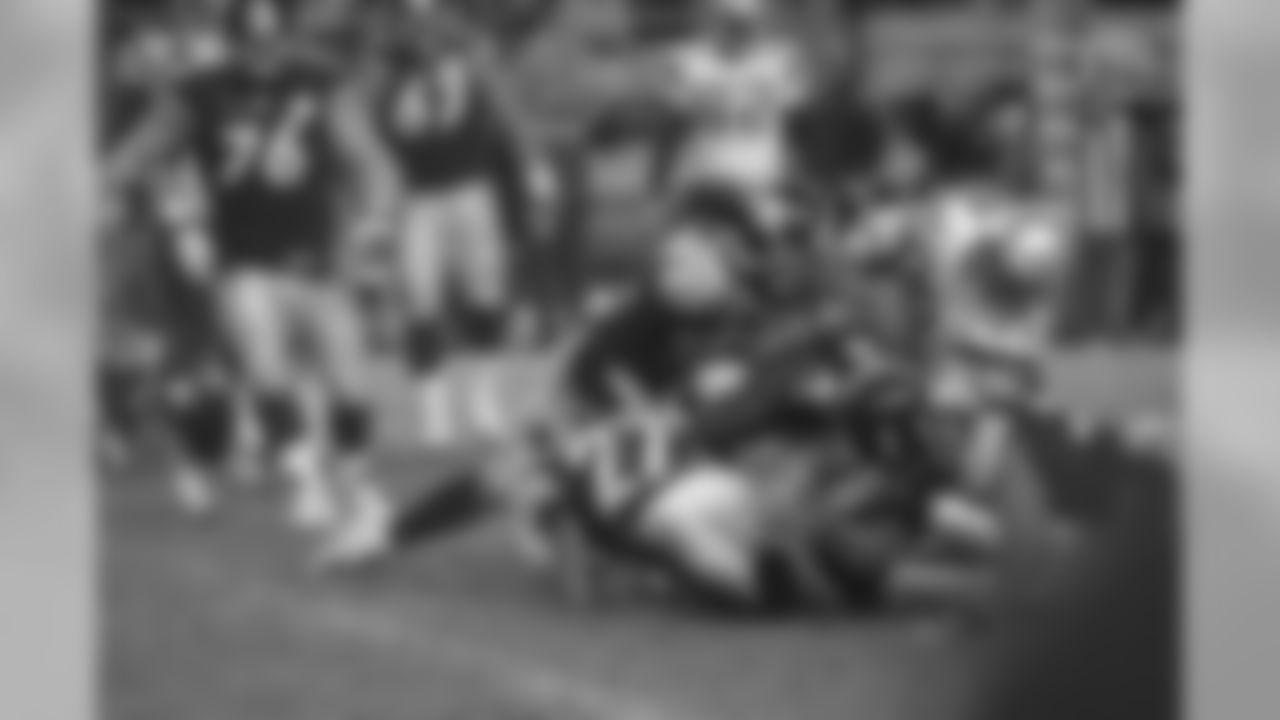EDITOR'S NOTE: IN HIS FIRST YEAR OF ELIGIBILITY, TROY POLAMALU IS ONE OF THE 15 MODERN ERA FINALISTS FOR INDUCTION INTO THE PRO FOOTBALL HALL OF FAME AS PART OF THE CLASS OF 2020. VOTING WILL TAKE PLACE ON SATURDAY, FEB. 1, IN SOUTH FLORIDA AT THE SITE OF SUPER BOWL LIV. THE WINNERS WILL BE ANNOUNCED ON SATURDAY NIGHT AS PART OF NFL HONORS, WHICH WILL BE BROADCAST ON FOX AT 8 P.M. FROM THE ADRIENNE ARSHT CENTER IN DOWNTOWN MIAMI.
Jack Buck was behind the microphone doing the play-by-play, but it was in a different sport in a different era. Still, the words he used that night in Los Angeles to describe what Kirk Gibson did during Game 1 of the 1988 World Series could apply to so many of the football moments authored by Troy Polamalu in venues in so many different NFL cities.
"I don't believe what I just saw."
Troy Polamalu was 7 years old when the Dodgers faced Oakland in the 1988 World Series, and his own career as a professional athlete would begin 15 years later when the Pittsburgh Steelers made him their first-round pick in the 2003 NFL Draft. During his 12 seasons, Polamalu played in 158 regular season games, and he started every one of those except for the 16 during his rookie year.
He amassed 783 tackles, with 32 interceptions and seven fumble recoveries for a total of 39 takeaways; he had 12 sacks and 14 forced fumbles; and he scored five defensive touchdowns. He was voted to the Pro Bowl eight times, he was voted first-team All-Pro four times, and in 2010 he was the NFL Defensive Player of the Year. But such a bland recitation of statistics and accomplishments just doesn't begin to describe the player Polamalu was, or put into context the impact he had, or come close to explaining the human highlights film he always will be.
That's because so much of the brilliance of Polamalu had to do with the visual. If you saw him ply his craft, it is much easier to understand what was special about his career with the Pittsburgh Steelers and thus makes him a worthy candidate to be elected to the Pro Football Hall of Fame in his first year of eligibility. The way he threw his body around. How he always seemed to be getting from Point A to Point B at 100 miles per hour, and there were times when nobody knew where he was going – maybe not even Polamalu – or where he might suddenly turn up on the field. And then in addition to all that was the hair. Flowing out of the back of his helmet, long enough to obscure the name on the back of his jersey, his thick black hair made Polamalu instantly recognizable and helped make everything he did memorable because it added to the visual.
The Pittsburgh Steelers are one of the NFL's storied franchises, and their all-time roster is dotted with great players, great players who were characters, great players who were fan favorites. And then there was Troy. During his career, his No. 43 jersey consistently was a top seller throughout the league, and where it really performed well was in the smaller sizes, and that was because of his popularity among women and children. He didn't intimidate the NFL's female fans and he charmed the children, but he could scare the bejeezus out of opposing quarterbacks, running backs, and receivers.
"One key to success for a quarterback is to study a lot of film in order to understand defensive tendencies and know how the defense will try to defend everything you are trying to do as an offense," said Tom Brady, "but that never worked against Troy. He was one of the most instinctive and disruptive players I have ever played against. Outside of his incredible athleticism, his greatest skill was his unpredictability. You could never quite get a bead on what he was doing, yet he was always around the ball. Troy was just a playmaker who you had to account for on every play. It was amazing to watch film on him and to try to understand how he knew where to be and when. If you wanted to find Troy, you just looked for where the ball was going, and you would always find him."
FAR FROM A STORYBOOK BEGINNING
When their 2002 season ended with a loss to the Tennessee Titans, the Steelers found themselves in a spot where it was going to be necessary to re-make their secondary, where starting strong safety Lee Flowers was too slow and starting free safety Brent Alexander was getting to be too old. Never a big participant in free agency, the Steelers made an exception in 2003 and made a run at reigning Super Bowl MVP Dexter Jackson of the Tampa Bay Buccaneers, a serious run in that they believed they had an agreement on a contract only to see Jackson sign with the Arizona Cardinals.
Having been spurned, the Steelers did what they usually did, which was turn their attention to the draft, and in the first round they got their safety. Sending their 27th overall pick, plus picks in the third and sixth rounds to Kansas City, the Steelers moved up to No. 16 overall and picked Troy Polamalu from USC. Today, that draft day move is considered one of the great moments in franchise history, but at the time it happened, well, not so much. It wasn't that the move was panned immediately, but there were questions, and lingering questions about whether a 5-foot-10 safety who was coming into the NFL with a bit of a concussion history was actually worth three draft picks.
When Kevin Colbert and Bill Cowher met the media immediately after making the pick, Cowher offered his opinion:
"Like Kevin said, he's a guy, if you didn't know his number, he's playing the game faster than a lot of people are on the field. Whether that's his speed, whether that's his heart, whether or not that's his instincts … it does not take long watching this guy play to see that he has a presence on the field. And so what we need to do is make sure he's comfortable with what we ask him to do and allow him to have the ability to play the game as fast as he has shown that he can. I talked to USC Coach Pete Carroll for a long time a couple of days ago, and he just couldn't say enough about this kid as a leader, as a player, as a person."
As training camp and the preseason melted into the 2003 regular season, the Steelers starting safeties emerged as Alexander and Mike Logan, and there wasn't any sentiment that the rookie No. 1 pick was being overlooked. Whether the Steelers weren't doing what Cowher said in making sure that Polamalu was comfortable with what he was being asked to do so that he could play the game fast, or whether Polamalu simply wasn't up to the task of mastering a complex NFL defensive scheme in a relatively short time, something clearly was missing.
Polamalu appeared in each of the 16 regular season games, and it seemed that whenever those "appearances" were noticed, it was because of something bad. He finished with 48 tackles, two sacks, and four passes defensed, but those clearly were not the kind of numbers people had in mind for a player who cost the team three draft picks to acquire.
Then the low point came on Sunday, Oct. 26 against the St. Louis Rams at Heinz Field. It was to be a historic day for the Steelers, the occasion of the 1,000th game in franchise history, but for their rookie No. 1 pick it would prove memorable for a different reason. The Steelers were 2-4 and coming off a bye when they hosted the Rams, and there was some energy in the stands after Antwaan Randle El pulled the home team into a 7-7 tie with an 82-yard punt return two plays before the end of the first quarter.
But the Rams responded with a drive into Steelers territory, and on a first-and-10 from the Pittsburgh 23-yard line with some eight minutes left before halftime, St. Louis quarterback Marc Bulger threw toward the right sideline for wide receiver Dane Looker, who ran a sideline pattern toward the pylon at the goal line. Polamalu undercut the route and got himself into position to make a play – a potential momentum changing interception or at least a pass defensed – but Bulger's pass went right through the rookie's hands and into Looker's midsection, and the Rams receiver secured the ball and stepped out of bounds at the 1-yard line.
One play later, the Rams had a 14-7 lead, and a quarter-and-a-half later they had a 33-21 victory, and what Polamalu had was the b-word being attached to his legacy as a first-round draft pick.
"The first year he came to the Steelers, the defensive staff thought he would never get it, that he would never figure out the intricacies of the defense he was in," said Jerome Bettis, who had been benched that season in favor of Amos Zereoue. "We had a really complex defense, and for whatever reason, they thought he couldn't pick it up. But as the years went by – and once he figured it out – he was by far the best player on our defense for a number of years. He just had that ability to make a play. When we really, really needed a play to be made, Troy came up with a play, whether it was an interception, whether he created a fumble, or whether it was a sack of the quarterback, he just did everything you could ever ask your superstar player to do and to be. As great of a player he was, he was just as great of a person."
In 2003, though, the potential greatness of Polamalu was only a rumor, but it also was during that time when his professional character revealed itself, even though few people were around to witness it. The Steelers, 2-4 at their bye, spent the rest of the 2003 season showing everyone they weren't a very good team, but in their practice facility Polamalu was working on learning the defense and getting himself more comfortable with the scheme and with the intricacies of playing professional football. On off days he was studying, watching video, putting in the time, and typically when difference-making ability collides with maniacal want-to, good things happen.
IT WAS LIKE NIGHT-AND-DAY
The dawn of the 2004 season was a fresh start for both Polamalu and the Steelers, and in a lot of ways it likely could be traced to the return of Dick LeBeau as defensive coordinator. An original member of Bill Cowher's staff of assistants, LeBeau was promoted from secondary coach to defensive coordinator in 1995 only to leave Pittsburgh for the same job in Cincinnati after the 1996 season. After failing as the Bengals head coach, LeBeau was coming off a season spent as an assistant head coach in Buffalo and was a free agent. Cowher reached out, and LeBeau came back to the team he knew gave him a real chance to win a Super Bowl.
And he came back to a team with a second-year safety who was on the verge of changing the game. LeBeau didn't know all that much about Polamalu in early 2004, but this is what he knows about him now:
"Troy is a generational talent, a one-in-a-million athlete," said LeBeau, HOF, Class of 2010 for his playing career as a cornerback with the Detroit Lions. "He has the most amazing football instincts I think I have ever seen. Accompanying that wonderful instinct was a willingness to work and prepare. His size and speed – that is surpassed I think by no one who has ever played safety. He was so quick and intuitive, absolutely a coach's dream. As far as I am concerned, as good a teammate as I have ever seen. He was so positive with the goals of the team and unassuming in terms of personal praise. He was absolutely too good to be true, but he was true. I just don't think there has ever been a safety who is any better. And he certainly is worthy of going into the Hall of Fame and going in on the first ballot."
It wasn't long into the 2004 season before Polamalu began doing some serious work on that resume.
First things first, Polamalu was a starter from the opening 11-on-11 practice of the offseason program, and as time passed his grip on that job tightened. In the season's third game, Polamalu recorded his first NFL interception against the Dolphins, but it largely went unnoticed because that also was the game that served as rookie quarterback Ben Roethlisberger's debut. But the following week against the Bengals at Heinz Field, Polamalu gave Steelers fans, and the NFL, a hint of what was to come.
The Steelers trailed, 17-14, after three quarters and then were trying to protect a 21-17 lead when the Bengals took over at their 20-yard line with 2:19 left when Chris Gardocki's punt went into the end zone for a touchback. Closing out games with their defense wasn't exactly the forte of the 2003 Steelers, but this was a different year and a different defense coordinated by a different guy.
On first down, Carson Palmer decided to get things going with what he believed was a safe pass to wide receiver T.J. Houshmandzadeh, but Polamalu came out of nowhere to cut underneath the receiver and make the interception. And then he was off – 100 miles per hour, hair flying everywhere, cutting back across the field, and then running over Palmer, who was his roommate at USC, at the goal line to get into the end zone for the clinching touchdown.
It was on.
A LIVING, BREATHING HIGHLIGHTS FILM
Everyone has a personal favorite, or personal nightmare in the case of an opponent. Such as the play against the Titans when Polamalu raced toward the line of scrimmage and timed the snap perfectly to vault the line of scrimmage and blow up a running play. Or when he did the same thing to stuff a quarterback sneak at the goal line. Or the 2010 regular season game in Baltimore, as usual in December, and with nothing more important at stake than where these teams were going to meet in the playoffs, because there was no doubt they both were going to be in the playoffs and no doubt both would advance far enough to face each other for a third time.
The Ravens were in control, even though their lead was just 10-6, as the game entered the final four minutes at M&T Bank Stadium. Facing a second-and-5 from their 43-yard line, Joe Flacco dropped back to pass and in the process of looking for a receiver, Polamalu shot into the backfield and because it was a situation where a sack might not be sufficient, he stripped the ball out of Flacco's right hand, and LaMarr Woodley scooped it up and ran it down to the Baltimore 9-yard line. Three plays later, the Steelers had their only touchdown of the night. A little more than two minutes after that, they had the victory to force the Ravens to come to Pittsburgh in the Divisional Round of the playoffs.
"Troy had the unique ability to affect the game in so many different ways," said Bettis. "Most safeties cannot affect a game in the running game, but Troy was just such a physical player, and it was like he was shot out of a cannon. Once he saw where the ball was going, he would beat the linebackers to the ball sometimes. He was that fast, he was that athletic, and he was fearless. He was not the biggest guy in the secondary, but he played like he was 6-foot-5, and he was in there attacking every time the ball carrier made a turn. Troy was always just there."
There also were the one-handed interceptions – leaping and snagging the ball high over his head in the 2009 regular season opener, or diving to get his fingertips under the ball in the snow against the Chargers in 2008.
"Troy was a special player because he played the game with instincts," said Bettis. "He was very instinctive. He just knew where the football was going to be, and he always, ALWAYS found himself around the football, whether it was intercepting the ball, creating a fumble, recovering a fumble. If you ever wanted to know where Troy was on the field, just find the ball and Troy was going to be right next to it."
And so often as it was happening, it was almost as though it was playing out with the voice of Jack Buck in your head.
UNDER THE BRIGHTEST LIGHTS, HE ALWAYS SHINED
Polamalu played in 15 postseason games during his Steelers career, including two Super Bowl victories, and he made a spectacular play in the two most critical playoff games in the runs to those championships.
In 2005, the Steelers earned a date against the top-seeded Colts in Indianapolis by defeating the Bengals in the Wild Card Round, and few gave them much chance to upset Peyton Manning and that prolific offense, especially after being humbled, 26-7, in the dome on a Monday night in late November. But in the rematch, the Steelers took control early and went into the fourth quarter with a 21-10 lead. After milking eight minutes off the clock with 12 plays of ground-and-pound followed by a punt that went into the end zone for a touchback, the Colts went about trying to slice into their deficit with six minutes to play.
After a 24-yard completion to Marvin Harrison, Manning threw short in the middle of the field to tight end Bryan Fletcher, and Polamalu appeared as if out of nowhere to make a diving interception. With nothing to lose, Colts Coach Tony Dungy challenged the play, and referee Peter Morelli answered Dungy's prayer and reversed the call on the field. Subsequent replays either showed that Polamalu had made the interception cleanly, or that no indisputable video evidence existed to overturn the call on the field, but Morelli inserted himself into the game and changed the course of it. Luckily for the Steelers, only temporarily.
Had the play stood as called on the field, the game was over. O-V-E-R, because had the play stood as called, the Colts wouldn't have gone on to score a touchdown a few plays later and add the 2-point conversion to make it 21-18. And had the play stood as called, the Steelers would've fed the Colts defense another healthy dose of ground-and-pound, and since Polamalu's interception would have given them the ball close to midfield, figuring on a 24-10 Steelers lead, at least, at the two-minute warning isn't a stretch. Anyway, the Steelers held on to win, but it is a shame that a bad call by a consistently poor referee robbed Polamalu of a special place in the history of one of the biggest upset victories in Steelers playoff history.
Three seasons later, the Steelers were in another do-or-die situation against a formidable opponent with a trip to the Super Bowl hanging in the balance, and this time there were no zebras mucking things up.
It was the fourth quarter of the 2008 AFC Championship Game against the Baltimore Ravens at Heinz Field, and most of the media assembled there would have agreed these were the two best teams in football that year. The Steelers had a 16-14 lead in the game, but since their offense seemed to be done for the day, and because the Ravens had just scored a touchdown to make it a 2-point game, the living-in-their-fears observers could envision a 17-14 final.
There was 6:50 remaining and the Ravens had a first-and-10 from their 14-yard line following a Mitch Berger punt. Joe Flacco's 20-yard completion to tight end Todd Heap had given the Ravens one first down, but a second-down sack by LaMarr Woodley put Baltimore in a third-and-13 hole from their 29-yard line. Flacco had been looking less like the rookie he was as the game progressed, but at this moment he committed the ultimate rookie mistake. He lost sight of Troy Polamalu.
Flacco got the ball out quickly on third-and-13, a pass to the right for Derrick Mason that he likely believed would keep the drive alive by giving the receiver a chance to run for the first down following the catch. But the ball never got to Mason, because Polamalu appeared from somewhere closer to the middle of the field and went high in the air to make the interception. And when he came down with the ball securely in his hands, Polamalu set off on a roundabout journey to the end zone. Starting to the right, then reversing his field around to the left, and then cutting up the field, Polamalu ran here, there, everywhere until he crossed the goal line with the game-clinching, conference-championship-clinching pick-six as 65,350 fans rocking Heinz Field to its foundation.
"I was watching a clip of Troy the other day, and I turned it off so quickly, so quickly," said Ravens linebacker Ray Lewis, "because it did not end well for us, and I haven't been the same since. Because when you're watching the (quarterback), you're asking yourself, 'Are you not looking at probably the best player on that team, like right now?' You have to locate Troy Polamalu. Just his ability to change games, and I always used to say that the greatest ones find a way to change the game in the course of a game. Where Troy and Ed (Reed) are very similar is that the game can be just going along, and then like we have many times in our rivalry, we watch Troy change the game. And even though I hated it, I had to respect it. When you talk about why the Hall of Fame for Troy, there are many kids, there are many people who play this game who will hope one day that they have the humility and the passion to play the game like Troy Polamalu played the game."
That one play contained all of the elements that made Polamalu a generational player: the classroom work to understand tendencies and habits; the instincts to have a feel for when the things studied were going to happen; the anticipation and quickness to know what's coming and to get there on time; the hand-eye coordination to leave your feet at the correct time and catch the football; and then the athletic ability, speed, and elusiveness to turn a takeaway into a significant and memorable touchdown in Steelers history.
"When you think about a Hall of Fame player, you think about someone who impacted the game, someone you had to game plan for," said Bill Cowher. "Ask any quarterback, they always knew where No. 43 was. He could change the game in one play."
If things go as they should this weekend, where No. 43 will be for the rest of time is in the Pro Football Hall of Fame.
Enjoy a gallery of Troy Polamalu photos

